ELECTRICAL SYSTEM PRESENTATION MENU The A320 electrical system

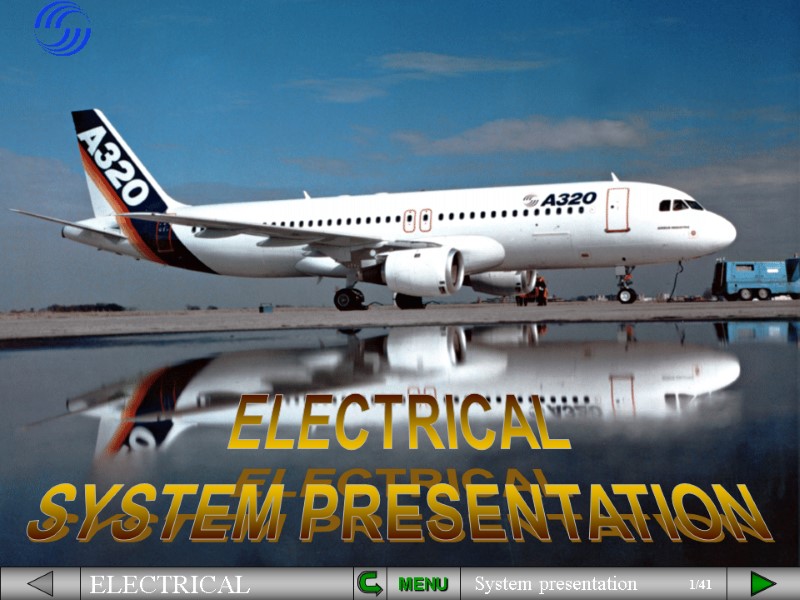
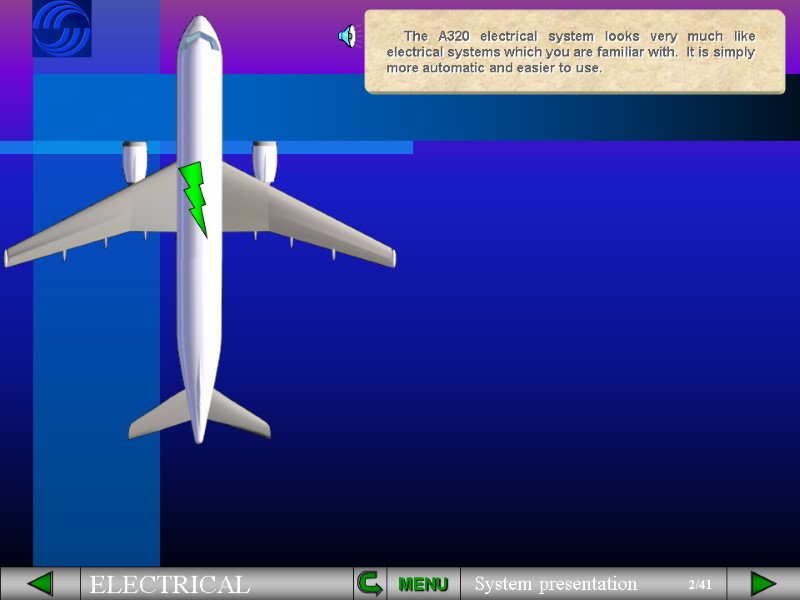
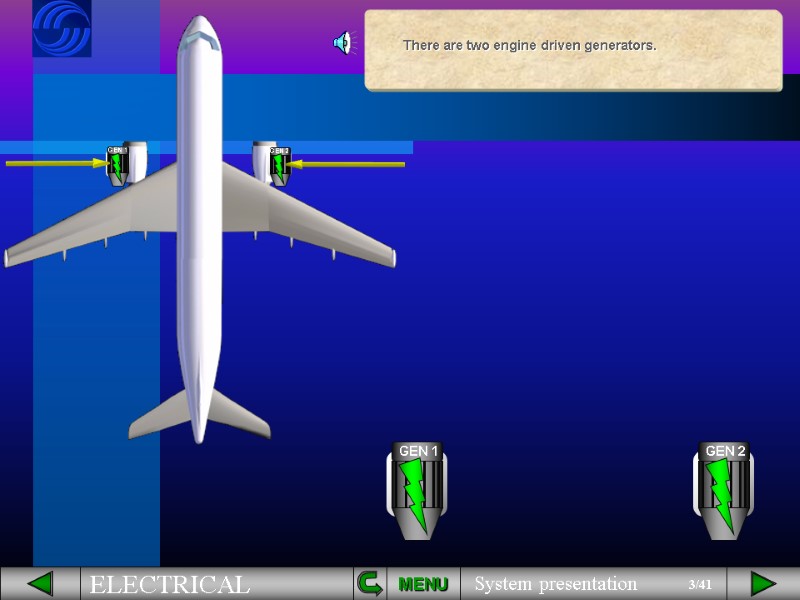
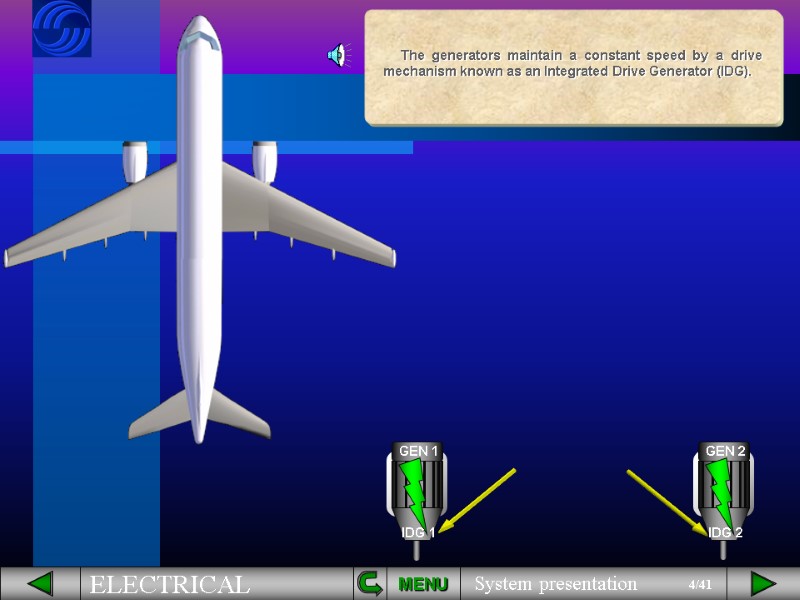
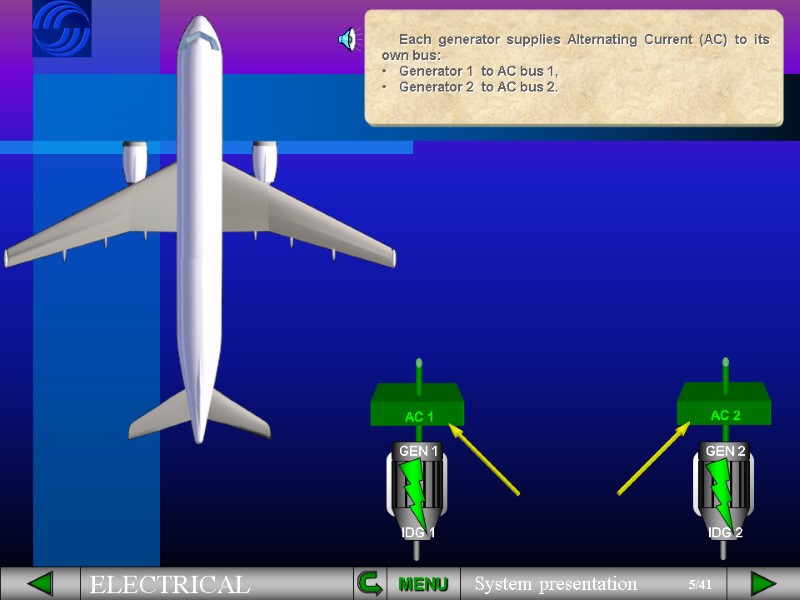
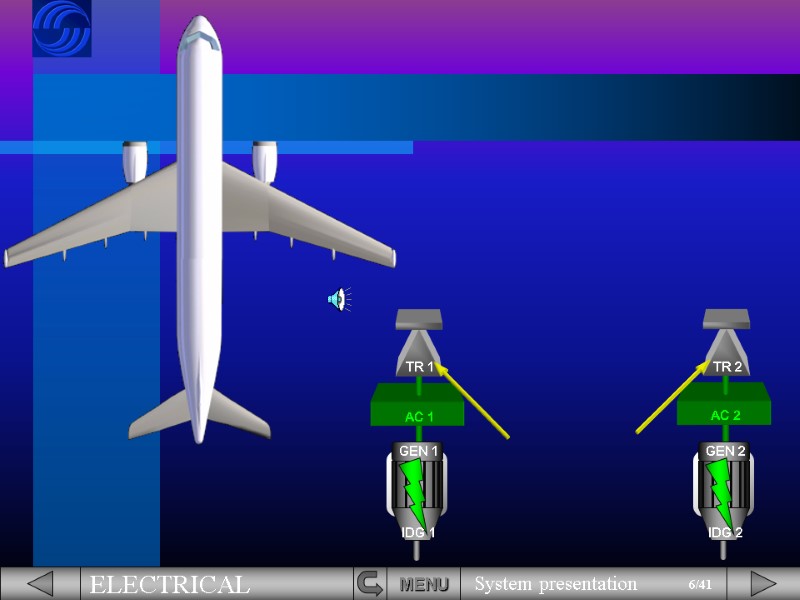
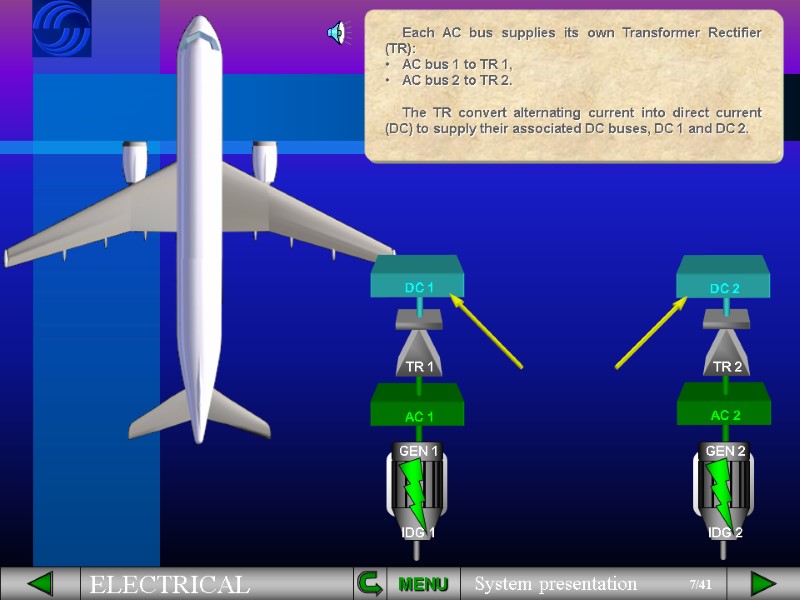
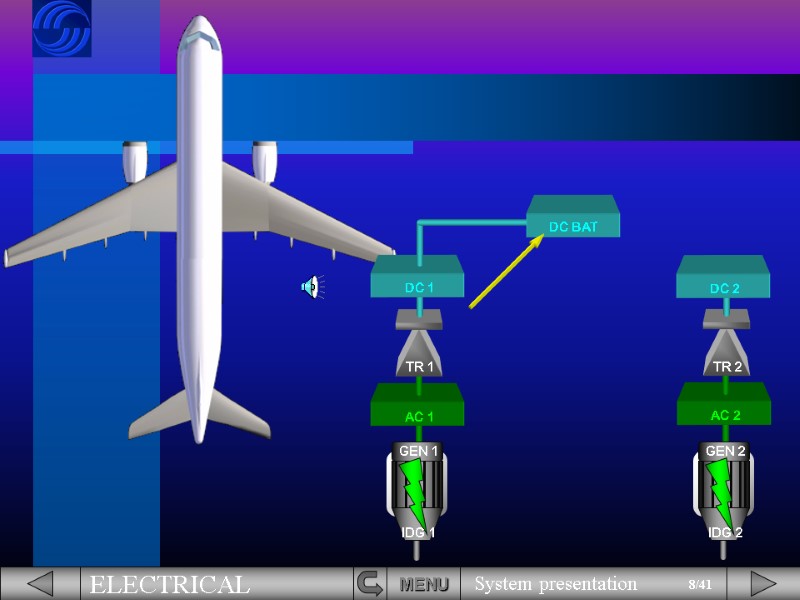
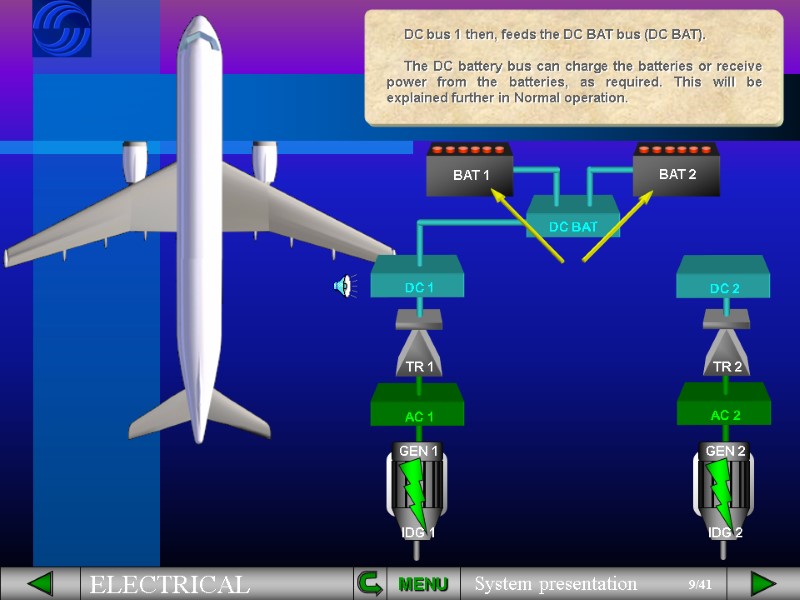
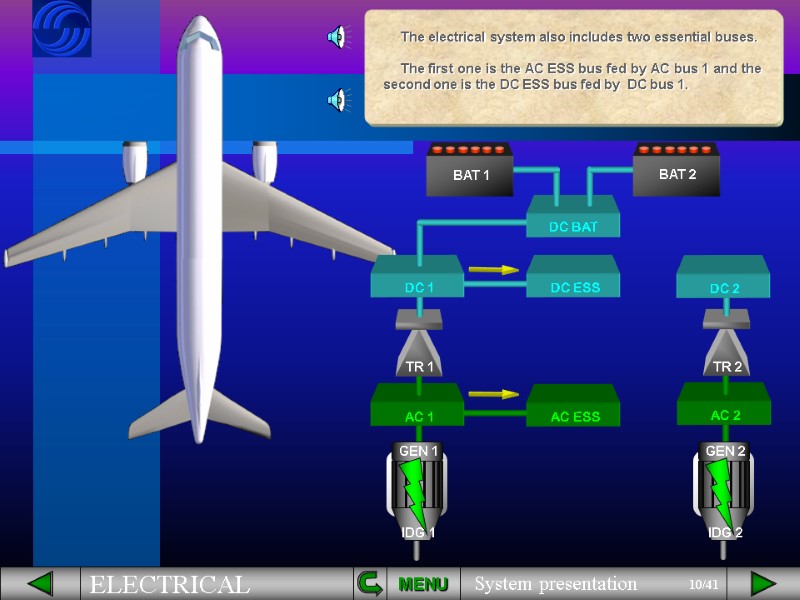
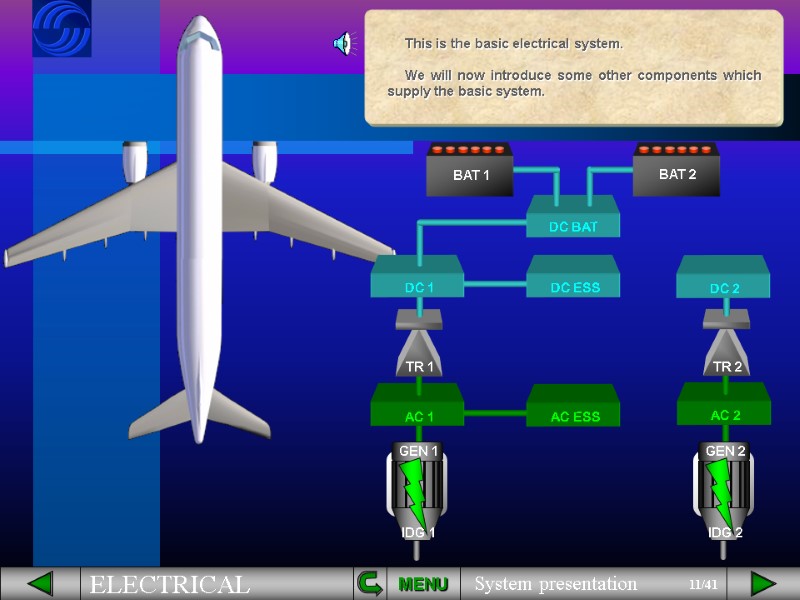
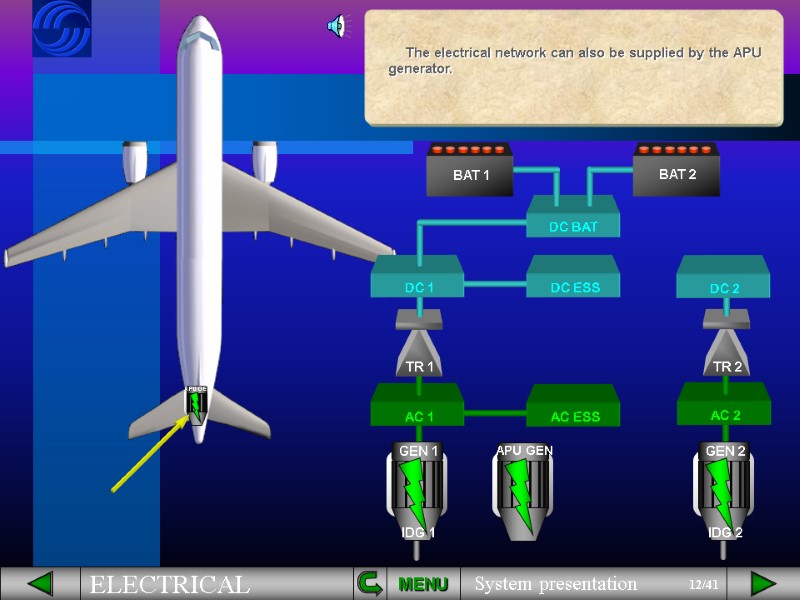
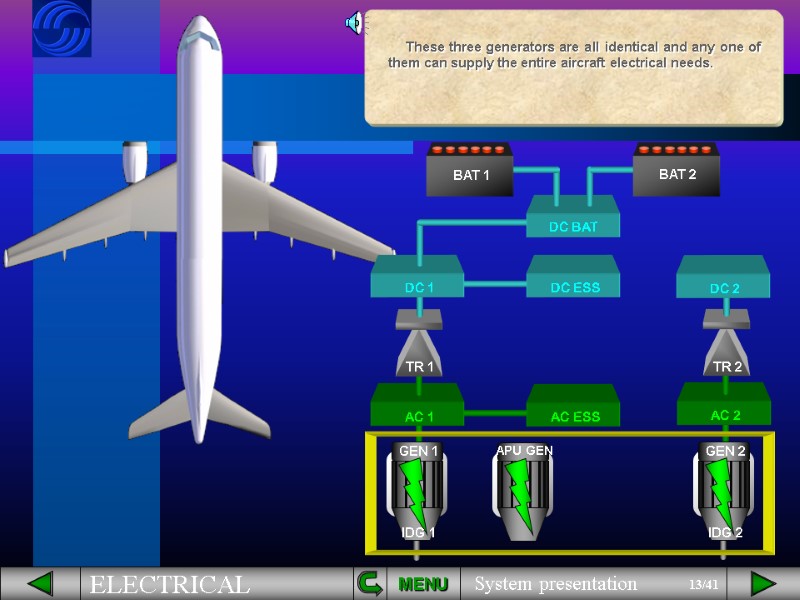
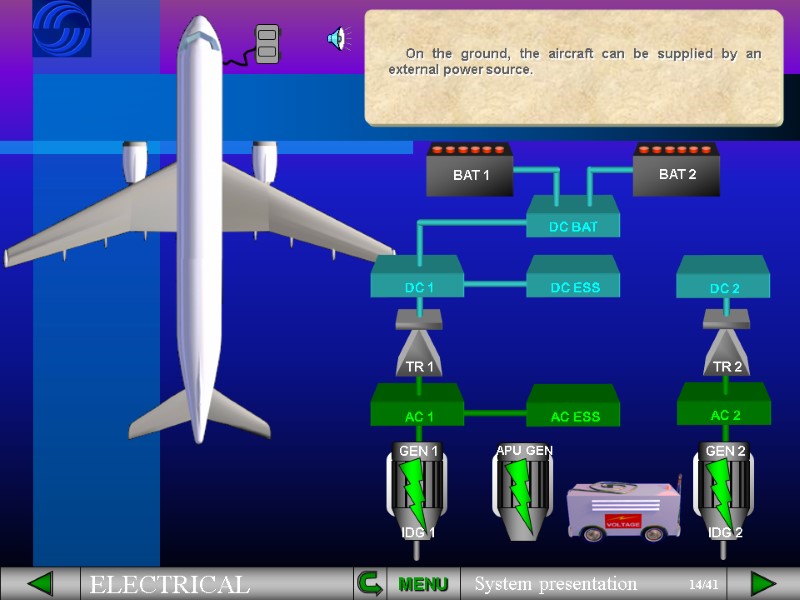
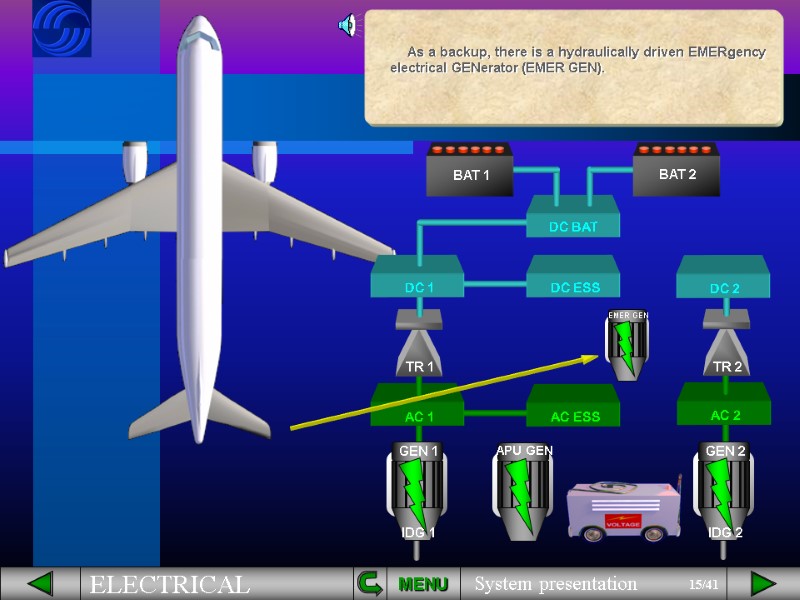
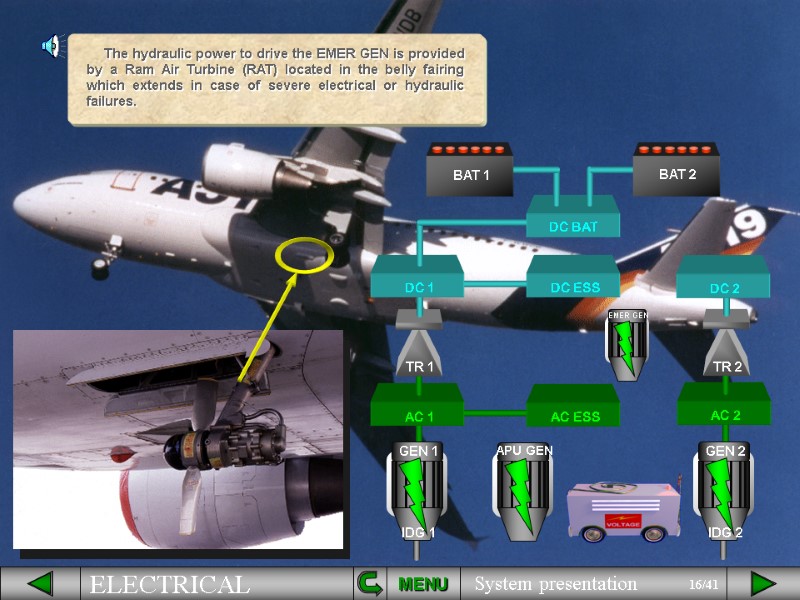
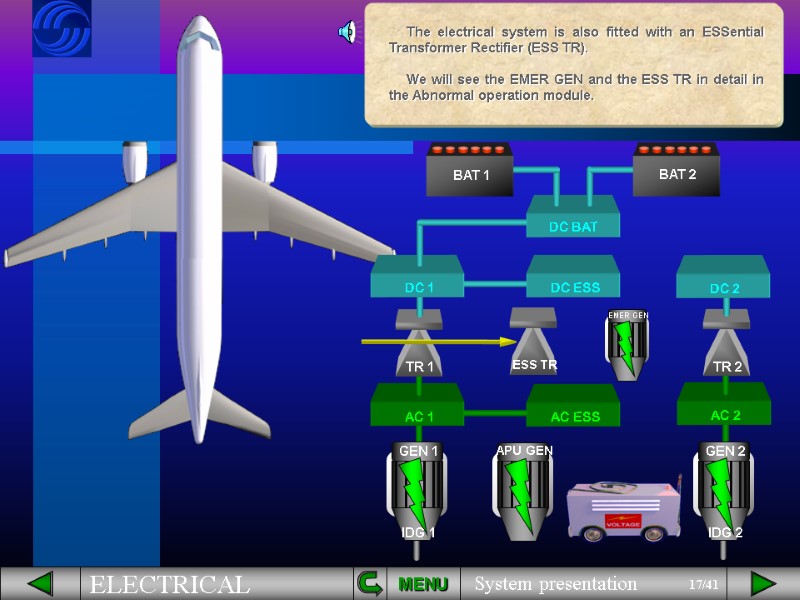


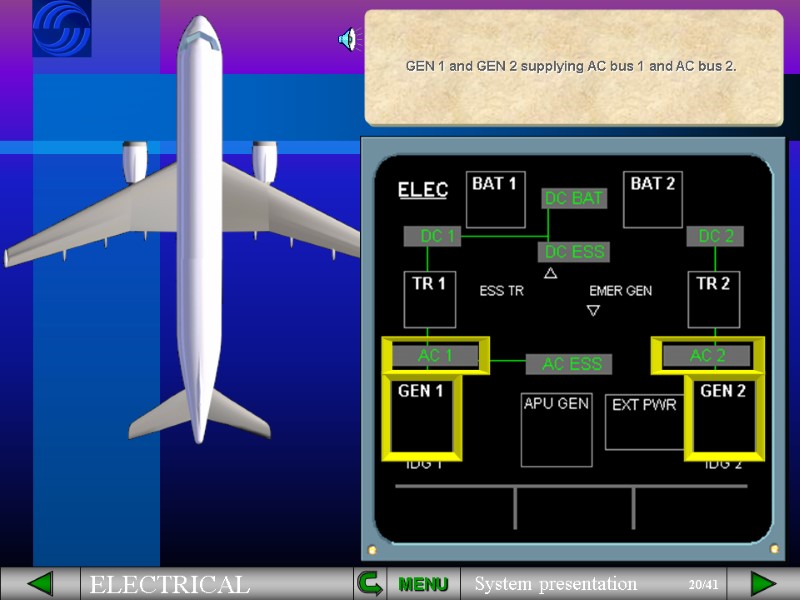
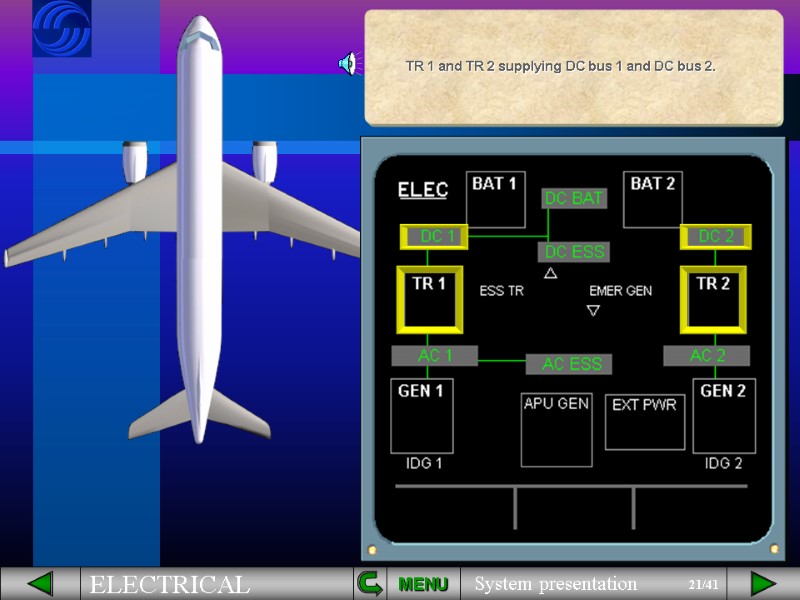
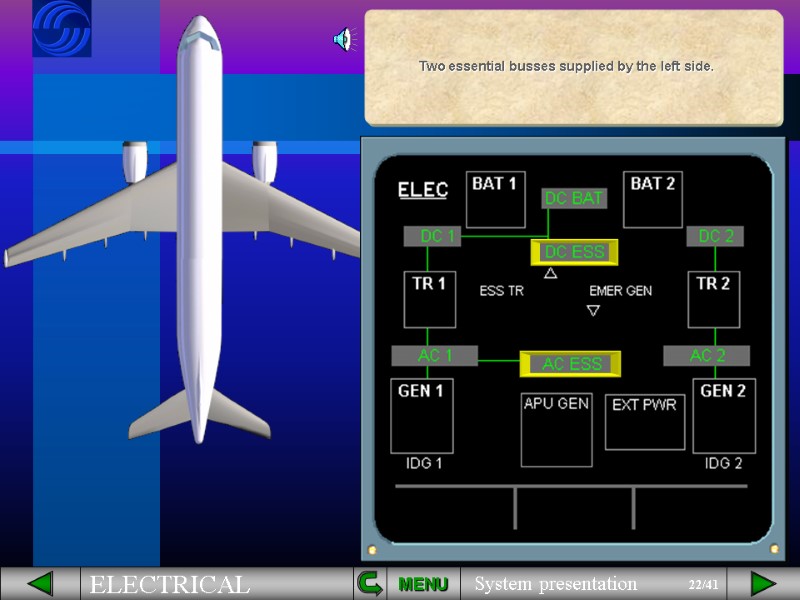
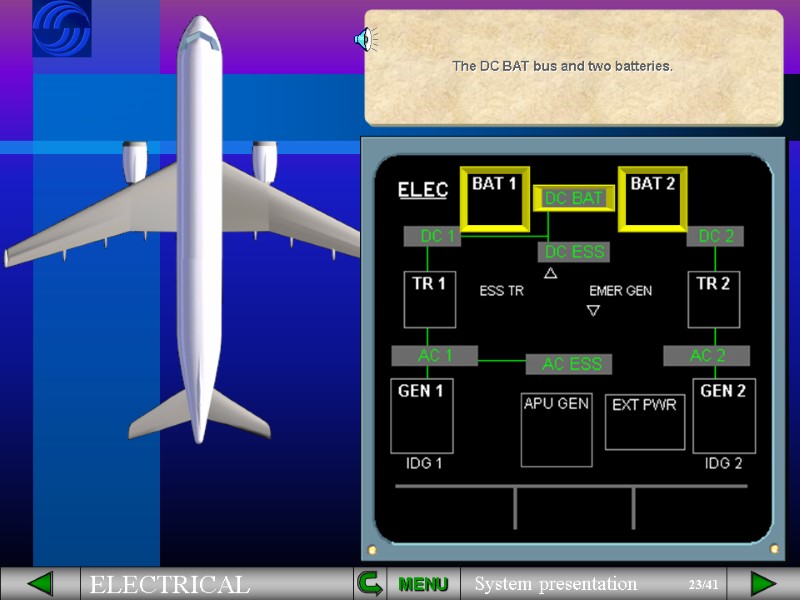
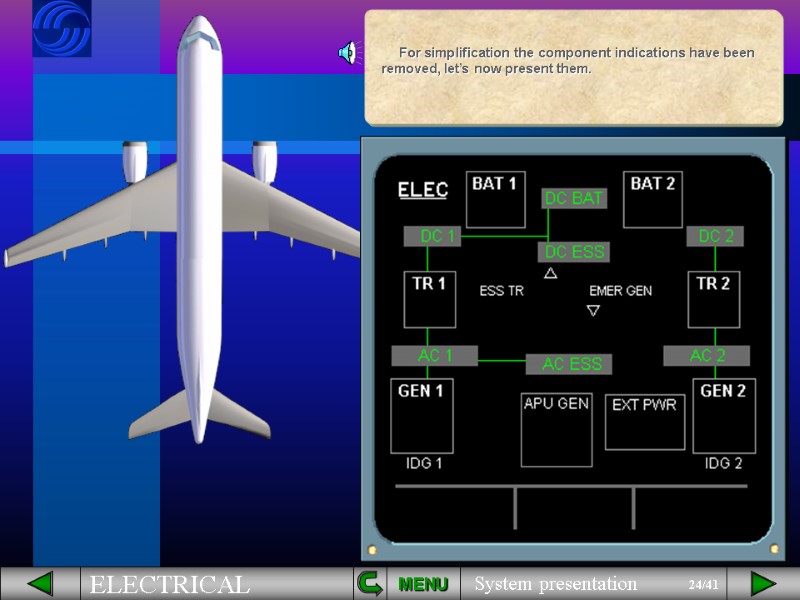
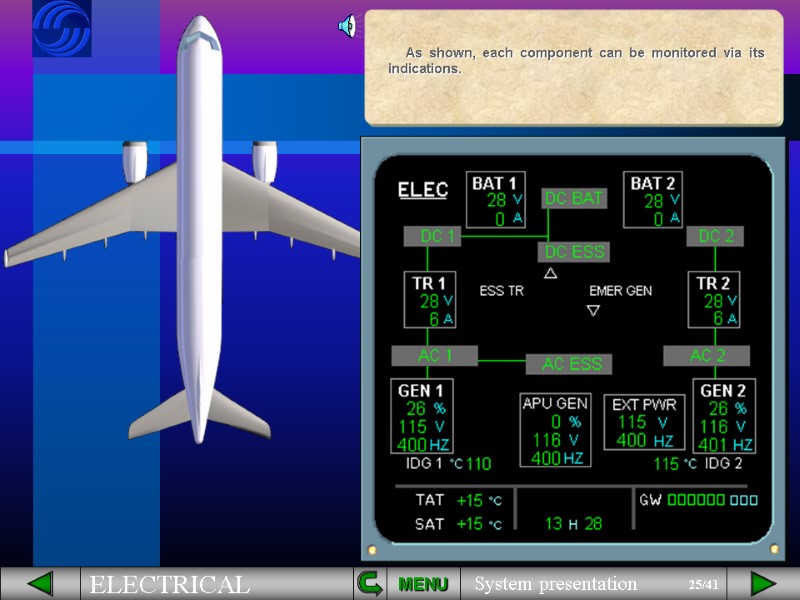
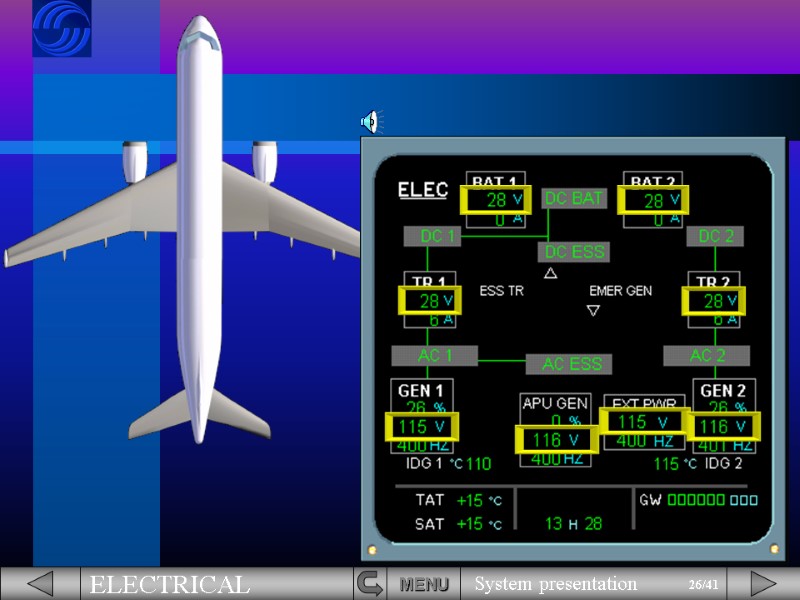
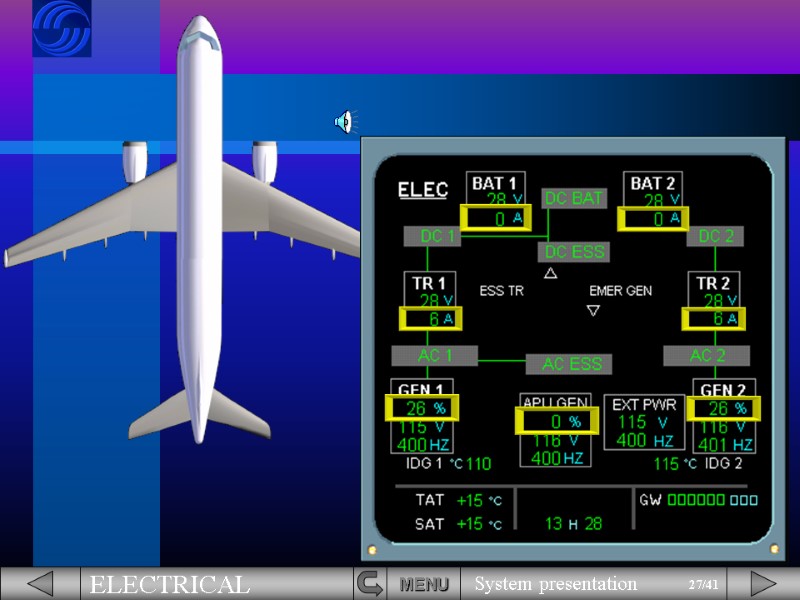

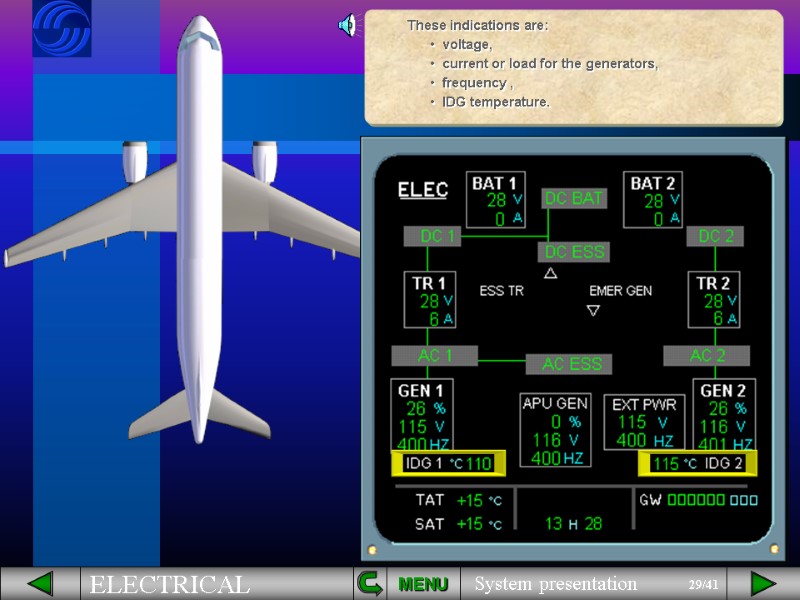
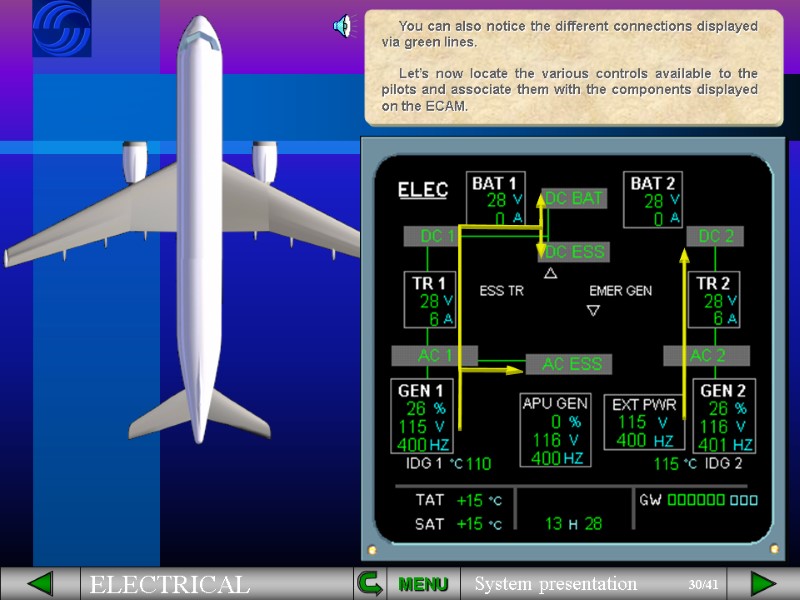
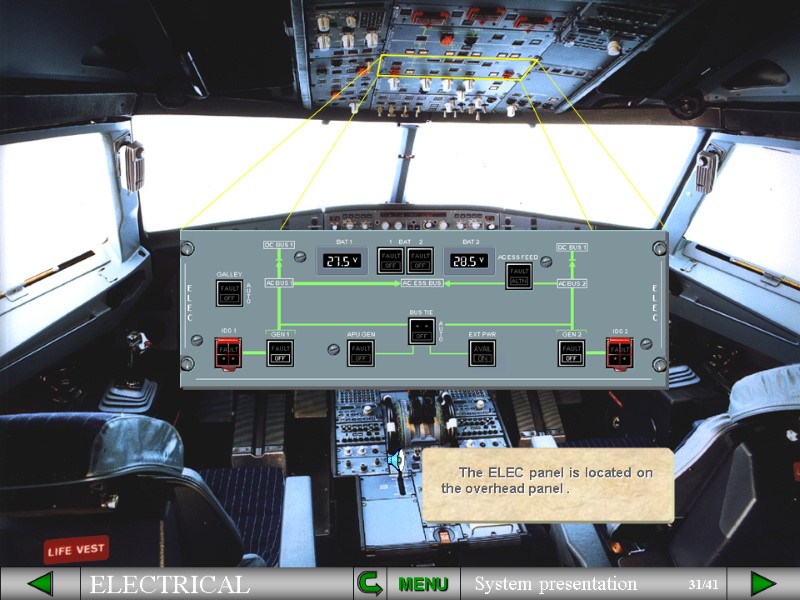
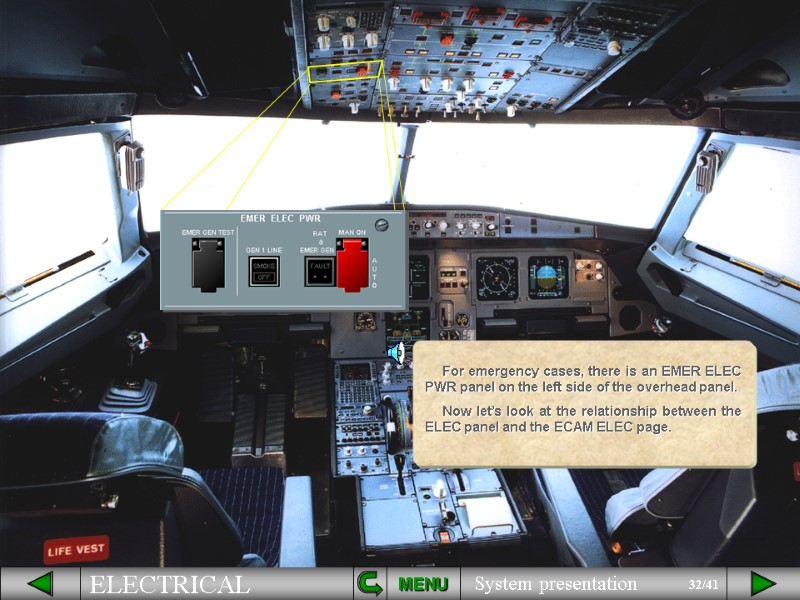
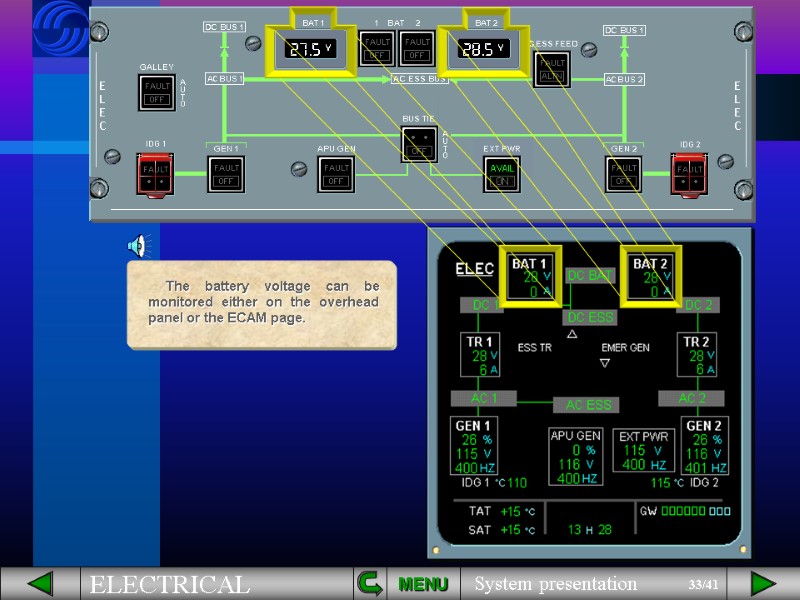
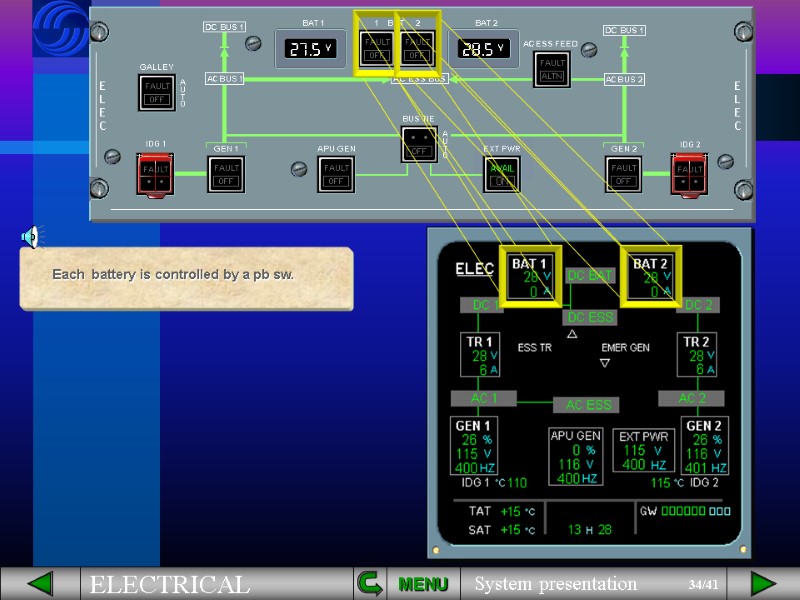
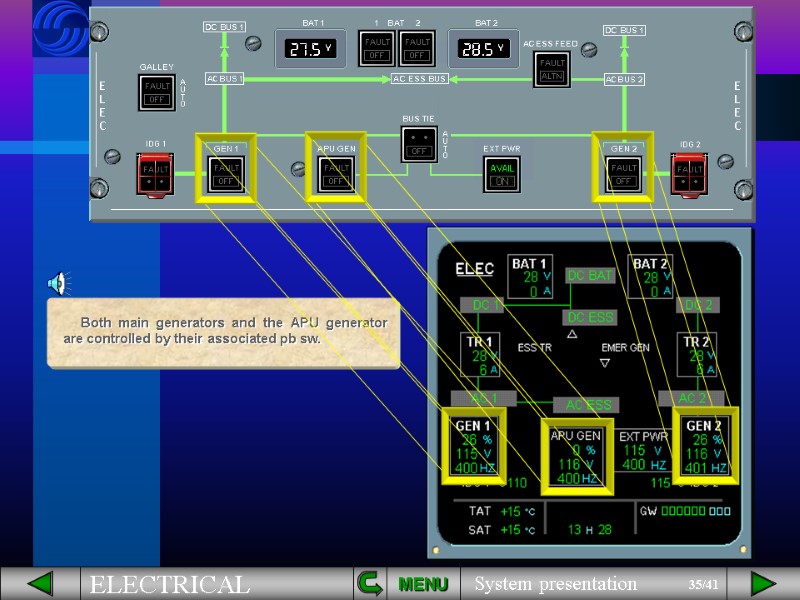
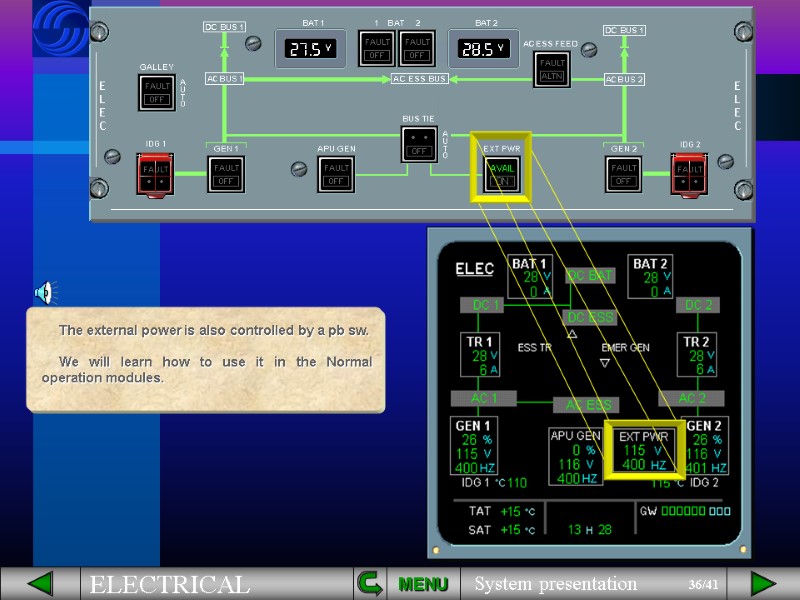
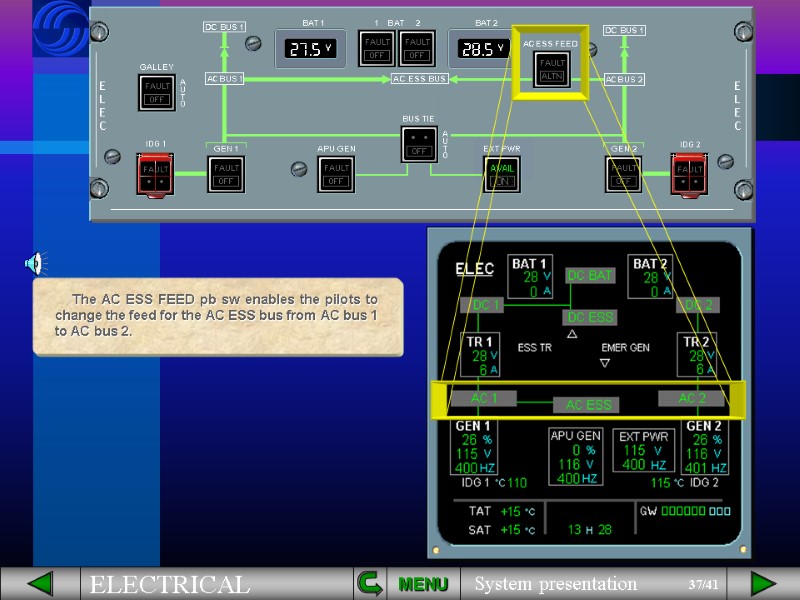
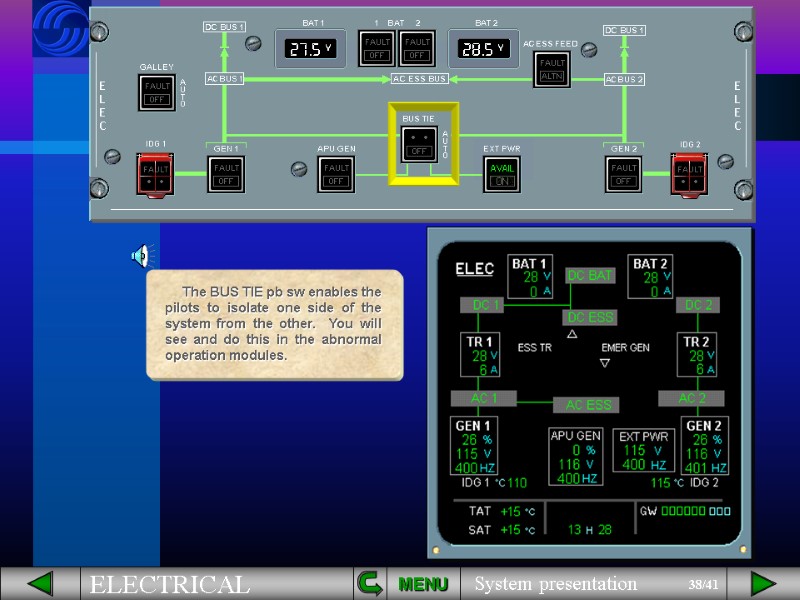
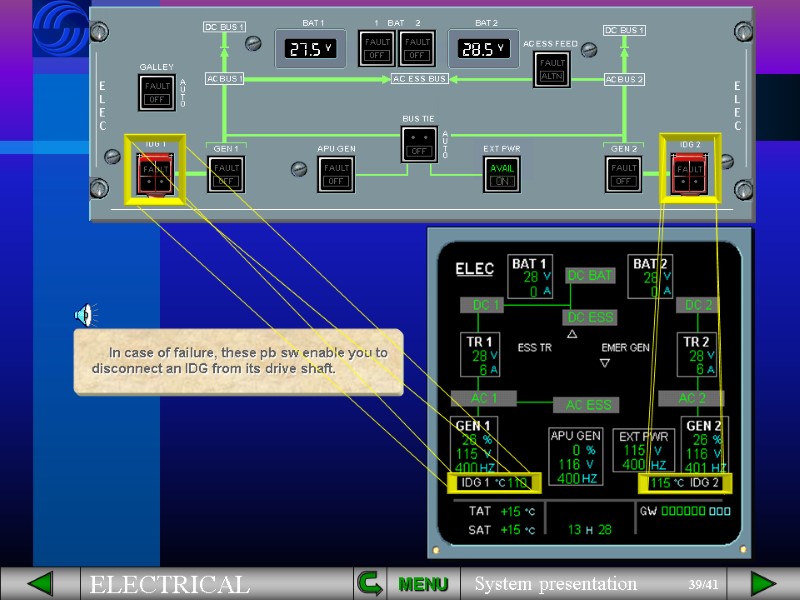
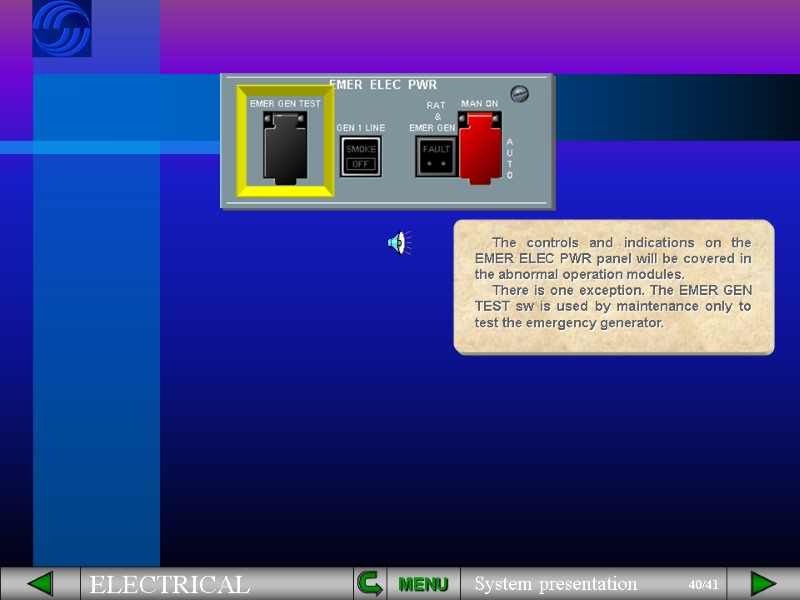
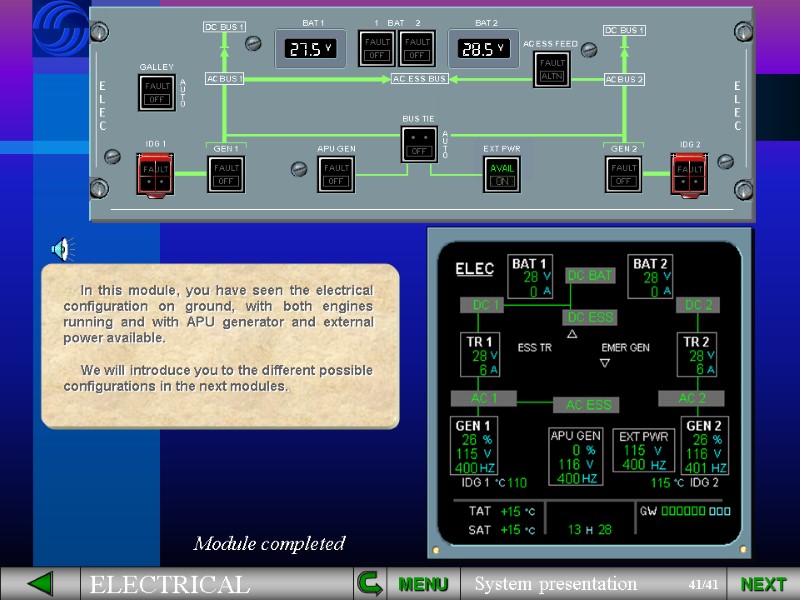

9494-01_electrical_system_presentation.ppt
- Количество слайдов: 42
 ELECTRICAL SYSTEM PRESENTATION MENU
ELECTRICAL SYSTEM PRESENTATION MENU
 The A320 electrical system looks very much like electrical systems which you are familiar with. It is simply more automatic and easier to use. MENU
The A320 electrical system looks very much like electrical systems which you are familiar with. It is simply more automatic and easier to use. MENU
 There are two engine driven generators. MENU
There are two engine driven generators. MENU
 The generators maintain a constant speed by a drive mechanism known as an Integrated Drive Generator (IDG). IDG 1 IDG 2 MENU
The generators maintain a constant speed by a drive mechanism known as an Integrated Drive Generator (IDG). IDG 1 IDG 2 MENU
 Each generator supplies Alternating Current (AC) to its own bus: Generator 1 to AC bus 1, Generator 2 to AC bus 2. MENU
Each generator supplies Alternating Current (AC) to its own bus: Generator 1 to AC bus 1, Generator 2 to AC bus 2. MENU

 Each AC bus supplies its own Transformer Rectifier (TR): AC bus 1 to TR 1, AC bus 2 to TR 2. The TR convert alternating current into direct current (DC) to supply their associated DC buses, DC 1 and DC 2. MENU
Each AC bus supplies its own Transformer Rectifier (TR): AC bus 1 to TR 1, AC bus 2 to TR 2. The TR convert alternating current into direct current (DC) to supply their associated DC buses, DC 1 and DC 2. MENU

 DC bus 1 then, feeds the DC BAT bus (DC BAT). The DC battery bus can charge the batteries or receive power from the batteries, as required. This will be explained further in Normal operation. MENU
DC bus 1 then, feeds the DC BAT bus (DC BAT). The DC battery bus can charge the batteries or receive power from the batteries, as required. This will be explained further in Normal operation. MENU
 DC BAT The electrical system also includes two essential buses. The first one is the AC ESS bus fed by AC bus 1 and the second one is the DC ESS bus fed by DC bus 1. MENU
DC BAT The electrical system also includes two essential buses. The first one is the AC ESS bus fed by AC bus 1 and the second one is the DC ESS bus fed by DC bus 1. MENU
 This is the basic electrical system. We will now introduce some other components which supply the basic system. DC BAT MENU
This is the basic electrical system. We will now introduce some other components which supply the basic system. DC BAT MENU
 The electrical network can also be supplied by the APU generator. DC BAT MENU
The electrical network can also be supplied by the APU generator. DC BAT MENU
 These three generators are all identical and any one of them can supply the entire aircraft electrical needs. DC BAT MENU
These three generators are all identical and any one of them can supply the entire aircraft electrical needs. DC BAT MENU
 DC BAT On the ground, the aircraft can be supplied by an external power source. MENU
DC BAT On the ground, the aircraft can be supplied by an external power source. MENU
 As a backup, there is a hydraulically driven EMERgency electrical GENerator (EMER GEN). MENU DC BAT
As a backup, there is a hydraulically driven EMERgency electrical GENerator (EMER GEN). MENU DC BAT
 The hydraulic power to drive the EMER GEN is provided by a Ram Air Turbine (RAT) located in the belly fairing which extends in case of severe electrical or hydraulic failures. MENU DC BAT
The hydraulic power to drive the EMER GEN is provided by a Ram Air Turbine (RAT) located in the belly fairing which extends in case of severe electrical or hydraulic failures. MENU DC BAT
 DC BAT The electrical system is also fitted with an ESSential Transformer Rectifier (ESS TR). We will see the EMER GEN and the ESS TR in detail in the Abnormal operation module. MENU
DC BAT The electrical system is also fitted with an ESSential Transformer Rectifier (ESS TR). We will see the EMER GEN and the ESS TR in detail in the Abnormal operation module. MENU
 Now, let's see how this information is presented to the pilots in the cockpit. We will introduce the ECAM ELEC page. DC BAT MENU
Now, let's see how this information is presented to the pilots in the cockpit. We will introduce the ECAM ELEC page. DC BAT MENU
 You can see that all the components we have talked about are displayed on the ECAM page. Notice that each component has a title to aid identification. Let’s briefly review the basic system using the ECAM ELEC page. DC BAT MENU
You can see that all the components we have talked about are displayed on the ECAM page. Notice that each component has a title to aid identification. Let’s briefly review the basic system using the ECAM ELEC page. DC BAT MENU
 GEN 1 and GEN 2 supplying AC bus 1 and AC bus 2. MENU
GEN 1 and GEN 2 supplying AC bus 1 and AC bus 2. MENU
 TR 1 and TR 2 supplying DC bus 1 and DC bus 2. MENU
TR 1 and TR 2 supplying DC bus 1 and DC bus 2. MENU
 Two essential busses supplied by the left side. MENU
Two essential busses supplied by the left side. MENU
 The DC BAT bus and two batteries. MENU
The DC BAT bus and two batteries. MENU
 For simplification the component indications have been removed, let’s now present them. MENU
For simplification the component indications have been removed, let’s now present them. MENU
 As shown, each component can be monitored via its indications. MENU
As shown, each component can be monitored via its indications. MENU



 MENU
MENU
 You can also notice the different connections displayed via green lines. Let’s now locate the various controls available to the pilots and associate them with the components displayed on the ECAM. MENU
You can also notice the different connections displayed via green lines. Let’s now locate the various controls available to the pilots and associate them with the components displayed on the ECAM. MENU
 The ELEC panel is located on the overhead panel . MENU
The ELEC panel is located on the overhead panel . MENU
 For emergency cases, there is an EMER ELEC PWR panel on the left side of the overhead panel. Now let’s look at the relationship between the ELEC panel and the ECAM ELEC page. MENU
For emergency cases, there is an EMER ELEC PWR panel on the left side of the overhead panel. Now let’s look at the relationship between the ELEC panel and the ECAM ELEC page. MENU
 The battery voltage can be monitored either on the overhead panel or the ECAM page. MENU
The battery voltage can be monitored either on the overhead panel or the ECAM page. MENU
 Each battery is controlled by a pb sw. MENU
Each battery is controlled by a pb sw. MENU
 Both main generators and the APU generator are controlled by their associated pb sw. MENU
Both main generators and the APU generator are controlled by their associated pb sw. MENU
 The external power is also controlled by a pb sw. We will learn how to use it in the Normal operation modules. MENU
The external power is also controlled by a pb sw. We will learn how to use it in the Normal operation modules. MENU
 The AC ESS FEED pb sw enables the pilots to change the feed for the AC ESS bus from AC bus 1 to AC bus 2. MENU
The AC ESS FEED pb sw enables the pilots to change the feed for the AC ESS bus from AC bus 1 to AC bus 2. MENU
 The BUS TIE pb sw enables the pilots to isolate one side of the system from the other. You will see and do this in the abnormal operation modules. MENU
The BUS TIE pb sw enables the pilots to isolate one side of the system from the other. You will see and do this in the abnormal operation modules. MENU
 In case of failure, these pb sw enable you to disconnect an IDG from its drive shaft. MENU
In case of failure, these pb sw enable you to disconnect an IDG from its drive shaft. MENU
 MENU The controls and indications on the EMER ELEC PWR panel will be covered in the abnormal operation modules. There is one exception. The EMER GEN TEST sw is used by maintenance only to test the emergency generator.
MENU The controls and indications on the EMER ELEC PWR panel will be covered in the abnormal operation modules. There is one exception. The EMER GEN TEST sw is used by maintenance only to test the emergency generator.
 In this module, you have seen the electrical configuration on ground, with both engines running and with APU generator and external power available. We will introduce you to the different possible configurations in the next modules. NEXT MENU Module completed
In this module, you have seen the electrical configuration on ground, with both engines running and with APU generator and external power available. We will introduce you to the different possible configurations in the next modules. NEXT MENU Module completed
 LIST OF SUBJECTS MENU EXIT GLOSSARY AUDIO FCOM RETURN SYSTEM INTRODUCTION ECAM ELEC PAGE EMER ELEC PWR PANEL PANEL LOCATIONS ELEC PANEL
LIST OF SUBJECTS MENU EXIT GLOSSARY AUDIO FCOM RETURN SYSTEM INTRODUCTION ECAM ELEC PAGE EMER ELEC PWR PANEL PANEL LOCATIONS ELEC PANEL

